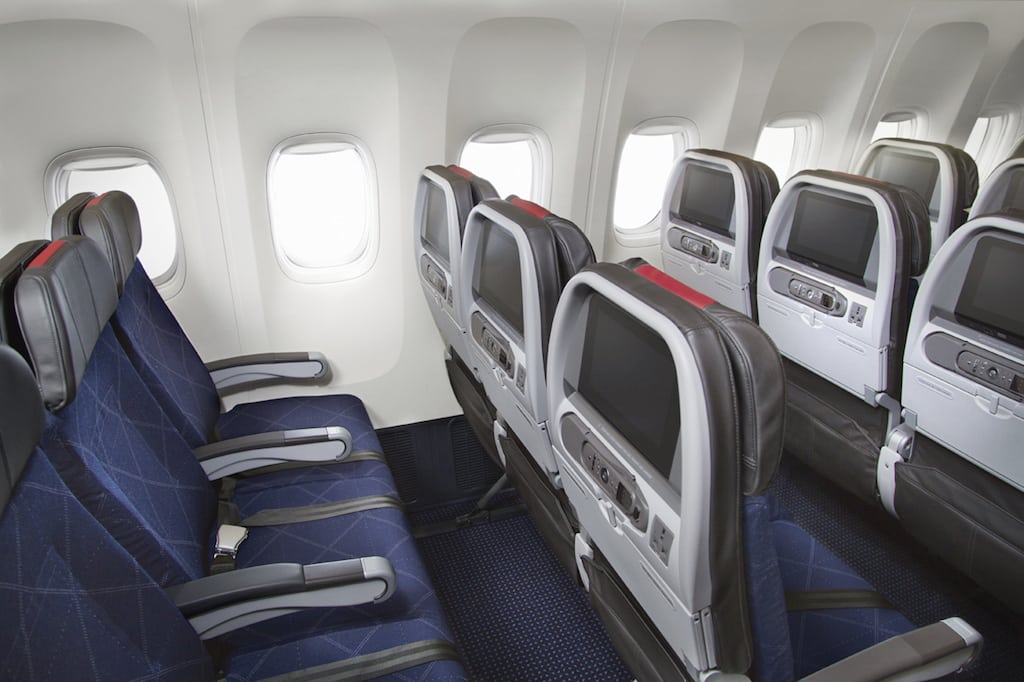It's Getting Easier to Redeem Frequent Flyer Miles: New Study

Skift Take
Several once-stingy airlines now make more reasonably-priced free seats available to loyalty program members than a few years ago, perhaps to satisfy credit card companies who spend billions of dollars annually buying points for their best customers, according to a new study.
Worldwide, American Airlines showed the biggest jump in the annual CarTrawler Reward Seat Availability Survey, offering cheap reward seats on roughly 82 percent of flights, an increase of 27.8 points, year-over year. Other major gainers include Turkish Airlines (up 15.7 points to 95 percent) and United Airlines (up 10.7 points to 75.7 precent.)
It can be challenging to compare the world's frequent flyer programs because all have their own rules, and each prices awards differently. Nonetheless, analyst Jay Sorensen of IdeaWorksCompany tries each spring to answer a simple question: “How easy is redemption for the basic and most popular reward type offered by the world’s top airlines?"
This year, as every year, Southwest Airlines ranked first, because it makes free seats available on every flight, a point of pride for the carrier.
Turkish Airlines, Air Canada, JetBlue Airways, Lufthansa Group and Qantas Group all also make reasonably-priced free tickets available on more than 90 percent of flights studied by IdeaWorks. Other strong performers include China Eastern, Norwegian Air and American, which all make available cheap redemptions on 80 percent of flights.
Sorensen's data suggests it is getting easier on many airlines to redeem for the cheapest awards, though the trend may not be as favorable to customers as it appears. Increasingly, Sorensen noted in an interview, airlines tie award prices to fares.
Five or more years ago, passengers sometimes could redeem relatively few miles for what otherwise would have been an expensive ticket. Today, on many carriers, they may only may find cheap redemptions when the cash price of the ticket is discounted. It makes miles less valuable, but easier-to-use.
Of course, many infrequent flyers now earn fewer miles from travel than before. On many major carriers, mostly in the United States but increasingly in Europe, passengers earn miles based on how much they've paid for the tickets, not how far they fly. Business travelers may earn more in this system, while leisure travelers tend to lose.
Credit Card Game
Now, the average infrequent flyer may earn more miles from credit card spending than flying, a development that probably has changed how the programs operate. Each of the major card-issuers buys points from larger airlines, so banks can give points to their customers to reward spending.
This is a lucrative business for carriers. Last year, Delta Air Lines said it would reap roughly $3 billion from its relationship with American Express. But for consumers, those miles must be worth something, or customers will cancel the cards, and banks may not want to continue the relationships. That may be part of the reason airlines now offer more lower-level wards, Sorensen said.
"The advent of co-branded cards has had an absolutely huge effect on frequent flyer programs," Sorensen said. "The bank relationships are really driving the economics of these programs right now."
The credit card game isn't new. But in an interview earlier this year, Andrew Watterson, chief revenue officer at Southwest Airlines, said banks began to take relationships with airlines more seriously after the 2008 recession.
"As the economy strengthened and the airlines went through the re-negotiations with the banks, it got to the point of critical mass,” he said.
Now, Watterson said, Southwest is expanding to fly to Hawaii in part because it suspects the new routes will "ignite" credit card applications, adding to the airline's revenues.
Other airline executives are more coy in discussing the importance of credit card relationships. In a February interview, Bridget Blaise-Shamai, American's vice president of loyalty, said American sought to increase the number free seats it makes available because customers requested it, not because of credit card relationships.
"We know that we have our responsibilities in terms of the partnership," she said. "But I wouldn't say it's what we would talk about between the parties, anymore than we talk about what the APR is on the credit card, for example."
Here are the airlines that make the most reward seats available, according to Sorensen's study..
| Rank | Airline | availability | Yr-over-yr change |
|---|---|---|---|
| 1 | Southwest Airlines | 100.00% | No change |
| 2 | Air Canada | 96.40% | Up 6.4 points |
| 3 | Turkish Airlines | 95.00% | Up 15.7 points |
| 4 | JetBlue Airways | 94.30% | No change |
| 5 | Lufthansa Group | 91.40% | Up 0.7 points |
| 6 | Qantas Group | 90.70% | Up 9.3 points |
| 7 | China Eastern | 89.30% | New for 2018 |
| 8 | Norwegian Air | 84.30% | New for 2018 |
| 9 | American Airlines | 82.10% | Up 27.8 points |
| 10 | Air China | 80.00% | Up 5.7 points |
| 10 | China Southern | 80.00% | Up 5 points |
| 11 | Air Asia Group | 77.10% | Up 1.4 points |
| 12 | United Airlines | 75.70% | Up 10.7 points |
| 13 | Delta Air Lines | 72.10% | Down 2.2 points |
| 14 | Alaska Airlines | 69.30% | Down 12.1 points |
| 15 | Korean Air Lines | 68.60% | Down 2.8 points |




